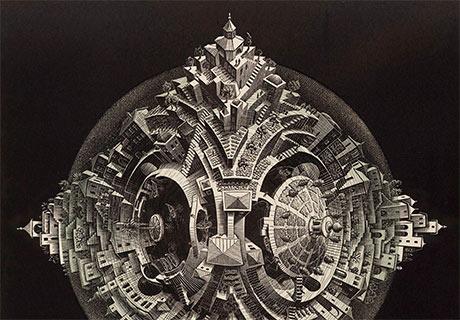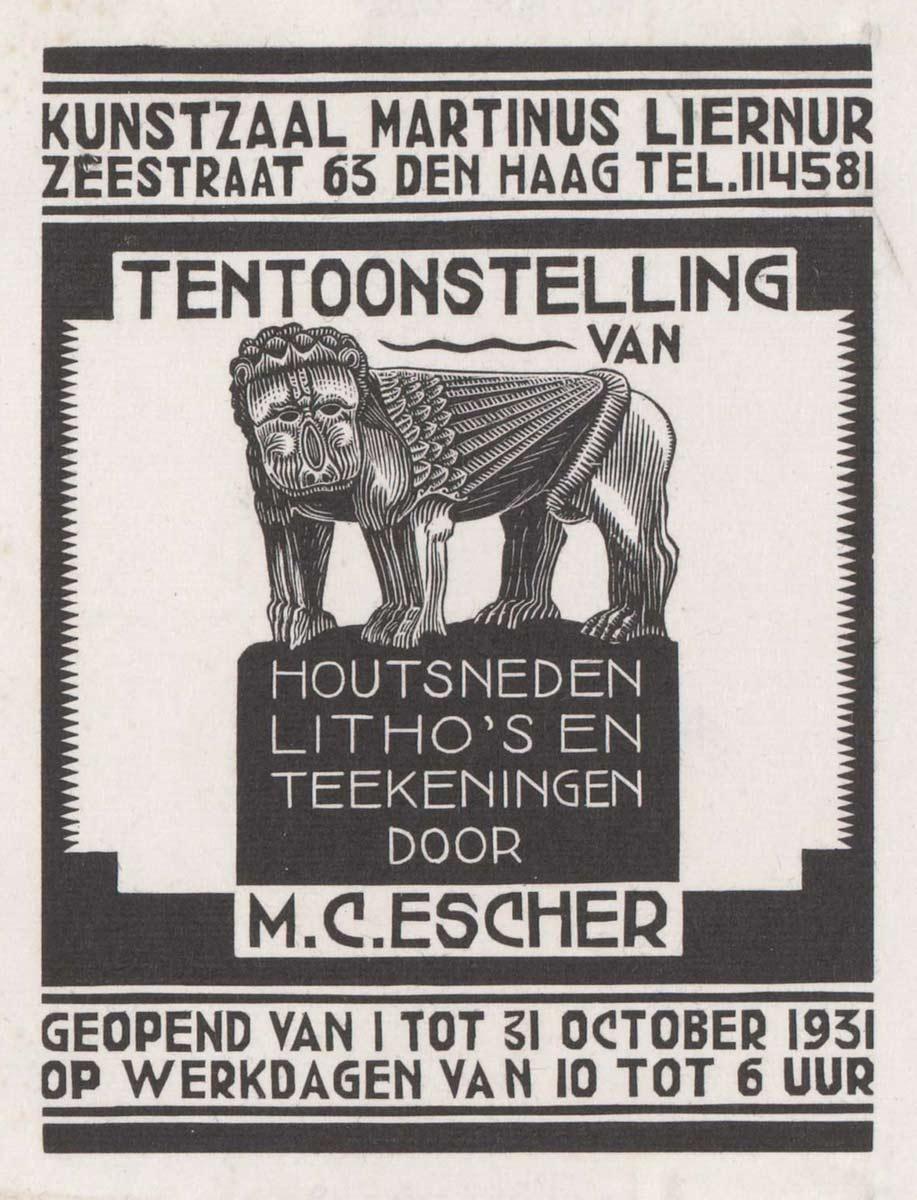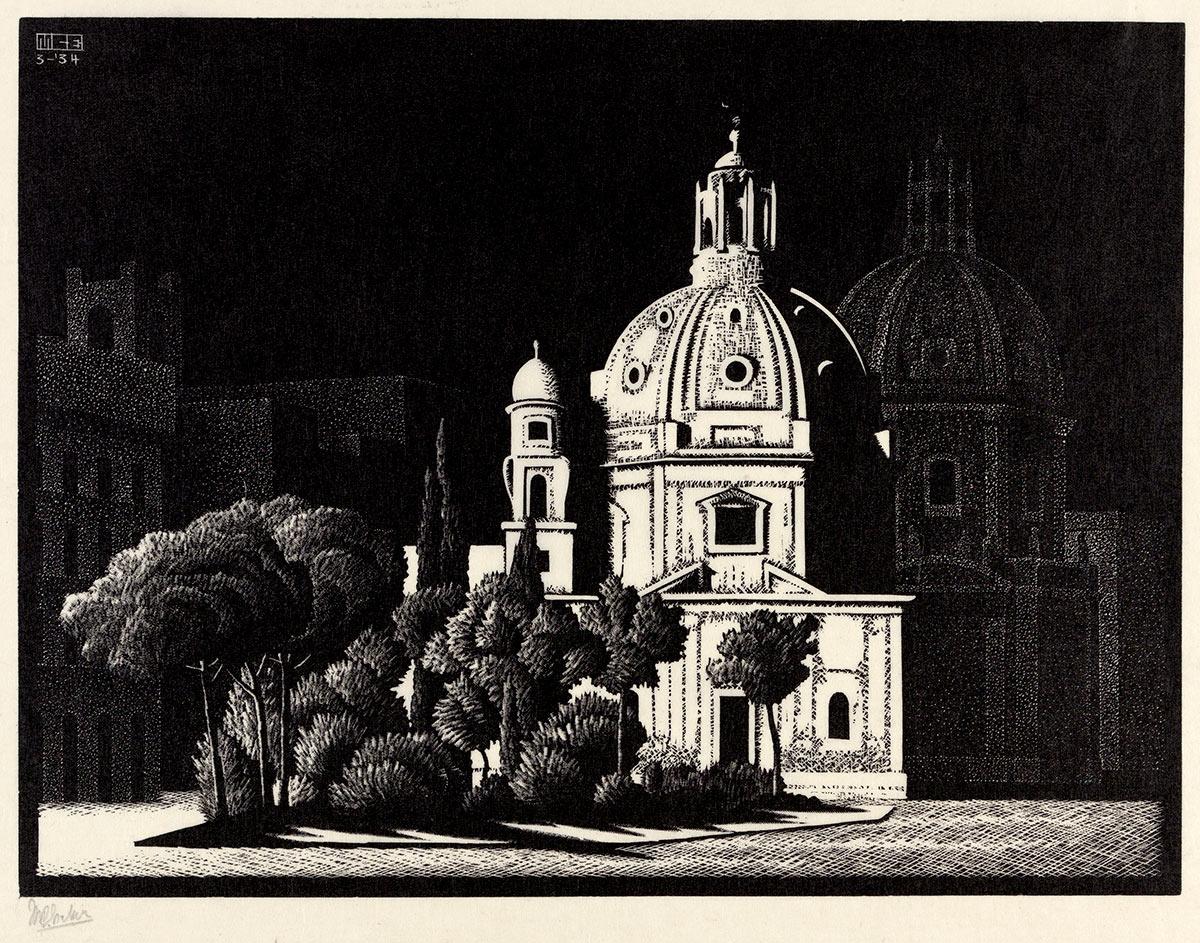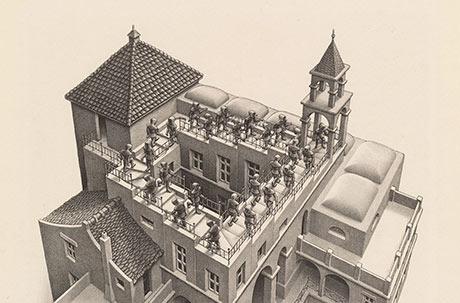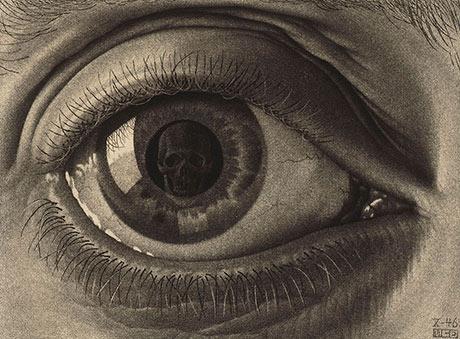Wood engraving is a relief printing technique which closely resembles the woodcut. In a woodcut, the block is cut along the grain, using planks that have been cut vertically from the trunk. In wood engraving the artist cuts across the grain. Very hard species of wood, like plum or palm trees, are used for engraving. A stronger tool – the burin – was needed to work this hard wood. A burin has a metal shaft that is V-shaped in section, with a sharp point at the end. It would be used to remove the parts of the wood that were not to be printed. This explains the different name of the technique: rather than cutting away the wood, the engraver would work against the end grain. It is possible to include more detailing in a wood engraving, as the burin allows grooves to be cut with more precision. Greys can also be introduced to the image using very fine cross hatching. Wood engravings tend to be fairly small, though larger prints can be made by joining several blocks together.
When working with wood Escher would often alternate between the woodcut and wood engraving technique. He was a fan of both. Wood engraving allowed him to introduce more detail, so he regularly opted for this technique. Considering his entire body of work, however, we cannot conclude that he would allow his choice of a particular technique to be dictated by the image he wished to make. Escher liked a challenge, and he would sometimes opt to make a highly detailed print using the woodcut technique, whereas a wood engraving might seem to be a more logical choice. He never actually worked with the level of detail and grey tones that an artist like Gustave Doré (1832-1883) used, for example. In Escher’s work the contrast between black and white, wood and groove always dominated. He had created many woodcuts before venturing into wood engraving. One of the first results dates from 1931, an invitation to an exhibition of his work in The Hague. The print shows a statue of a lion in Ravello, Italy, and the lettering for the exhibition. It is a graphic image that would have worked perfectly well as a woodcut. When he wanted to introduce lots of details and grey tones, he would make a lithograph.
